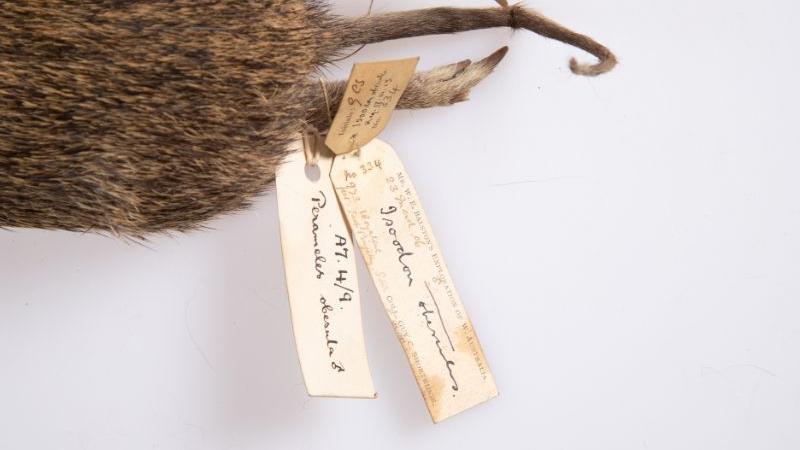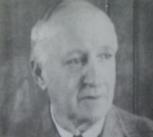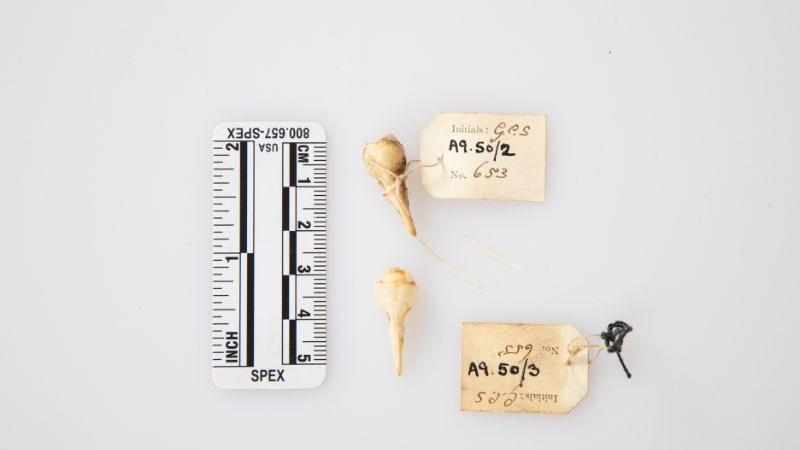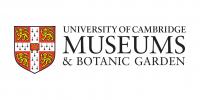What’s in the collection?
Five marsupials from southwest Western Australia – part of a much larger collection held in other museums.

When did it arrive?
March 1913
What do we know about the specimens in Cambridge?
A great deal. They were collected between 1904 and 1907 on “Mr W. E. Balston’s Exploration of Western Australia” – an expedition funded by William Balston (who did not otherwise take part; see below) on which Guy Shortridge was paid to collect a huge number of mammals and birds for the British Museum (Natural History) (BMNH or NHM).
Upon reading the contemporary published outputs of the Balston Expedition, by Shortridge himself (1909 and 1936) and by Oldfield Thomas (1906 and 1907), it would be easy to conclude that Shortridge personally collected almost all of the specimens himself, aside from occasional reference to his companion John W. Bell, who joined Shortridge for much of the expedition, and is also credited on certain specimen labels at the Natural History Museum, London; Oxford University Museum of Natural History and the University Museum of Zoology, Cambridge.
However, research on the Colonial histories of Australian mammal collections in Cambridge project has revealed that while Shortridge did collect some specimens himself, he relied heavily on the expertise and labour of Indigenous Australians and working-class settler colonists to amass the collections. These people provided logistical support, detailed information about species distributions and collected specimens directly. The expedition would have not succeeded without them, but Shortridge was given all the credit for collecting the specimens. It is unlikely the First Nations Australians were paid for their contributions.
Balston gave around 75 “duplicate” mammal specimens from the expedition to the Oxford University Museum of Natural History. The specimens in Cambridge were received via exchange from the BMNH in 1913. Derby Museums and Art Gallery also received one of the expedition’s banded hare-wallabies and one brushtail possum from the BMNH in 1934. Several specimens from the expedition were also deposited in the Western Australian Museum by Shortridge, in exchange for species he was lacking.

Who was Guy Shortridge?

Guy Chester Shortridge was an English-born mammal-collector and museum director of some renown.
He served in the South African constabulary during the Boer War of 1899-1901, and then was employed there by William Sclater, to collect birds and mammals for the South African Museum,
Following his return to England, he travelled to Western Australia – sent by Oldfield Thomas of the British Museum (Natural History) (BMNH) and William Balston – as the collector on the “Balston Exploration”. This was theoretically a one-man collecting trip (but see above), between late 1904 to 1907, mainly to southwestern Western Australia, plus around Carnarvon and to Bernier Island. Balston (see below) had offered to finance a collecting expedition on behalf of the BMNH to the region.
The value of Shortridge’s work on the Balston Expedition went well beyond amassing specimens for depositing in museums. Relying heavily on information from First Nations Australians about where species could be found, and how that had changed, Shortridge’s publications provided detailed account of mammal declines in Western Australian since European colonisation, citing cats and bush fires as key culprits – as well as outlining current and former ranges for all non-tropical Western Australian mammals. Many of these declines were already well in track, but his accounts of the abundance of some species which subsequently suffered total extinction, mainland extinctions, or massive range contractions provide a valuable baseline against which to compare current distributions. His expedition pre-dated the arrival of foxes in the region by around 20 years, and the establishment of rabbits.
Shortridge collected further material from Java on his way home from Australia. Also funded by Balston, half of this material was sent to the Oxford University Museum of Natural History, and half to BMNH.
He subsequently collected in Guatemala (in 1908, collecting live animals for the Zoological Society of London); New Guinea (on the British Ornithologists' Union jubilee expedition to New Guinea); in Southern India (in 1911 for the Bombay Natural History Society) and in Burma.
He served in the RAF in the Middle East during the First World War, and remained with them on survey work in Africa after the war ended. At the end of the survey, he collected for the BMNH in what was then Northern Rhodesia, and during that trip, in 1921, he was appointed Director of Kaffrarian Museum, King William's Town, South Africa. In that post he collected widely, particularly in Africa, becoming a leading authority on South African mammals.

Who was William Balston?
William Edward Balston was born to a family of papermakers and lived in Barvin, Potters Bar. Following an education at Eton and Oxford (graduating 1870), he worked at the Balston’s papermill until 1879. From then he used his father’s wealth to travel widely (in Europe, South Africa, Canada and Australia) and was never again employed.
He established a farm station at Willyung Creek near Albany, Western Australia (Shortridge stayed and collected there on the expedition), which was worked by four of his sons, and he himself occasionally visited.
He also amassed an impressive collection of his own, as revealed by the 1919 auction catalogue for his belongings following his death. It shows that in his collection he had some highly desirable specimens from around the world, including a chimpanzee, thylacine, aardvark and sloth skeletons, rhino, giraffe walrus and tiger skulls and much more.
Further Reading
Capt. G. C. Shortridge. Nature 163, 556–557 (1949). https://doi.org/10.1038/163556b0
Norris, C.A. and Pickering, J., (1995). A Catalogue of the Monotremata and Marsupialia in the Zoological Collections of The University Museum, Oxford. The University Museum, Oxford.
Short, J. (2004). Mammal decline in southern Western Australia – perspectives from Shortridge's collections of mammals in 1904–07. Australian Zoologist, 32 (4): 605–628. doi: https://doi.org/10.7882/AZ.2004.006





